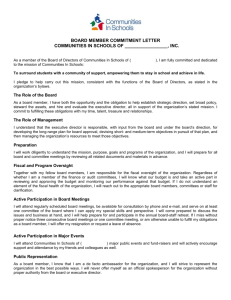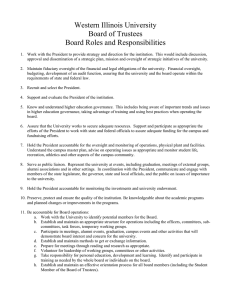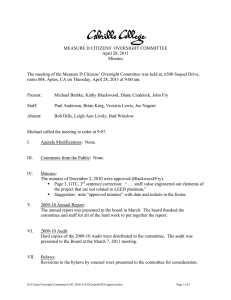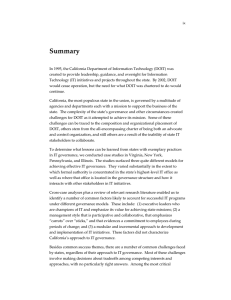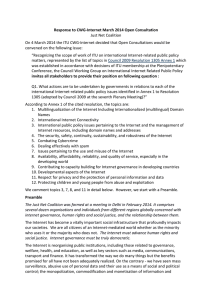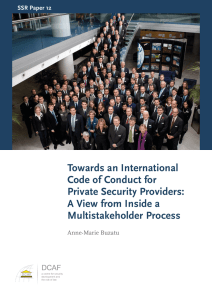Revisiting the Role of the Executive Committee
advertisement
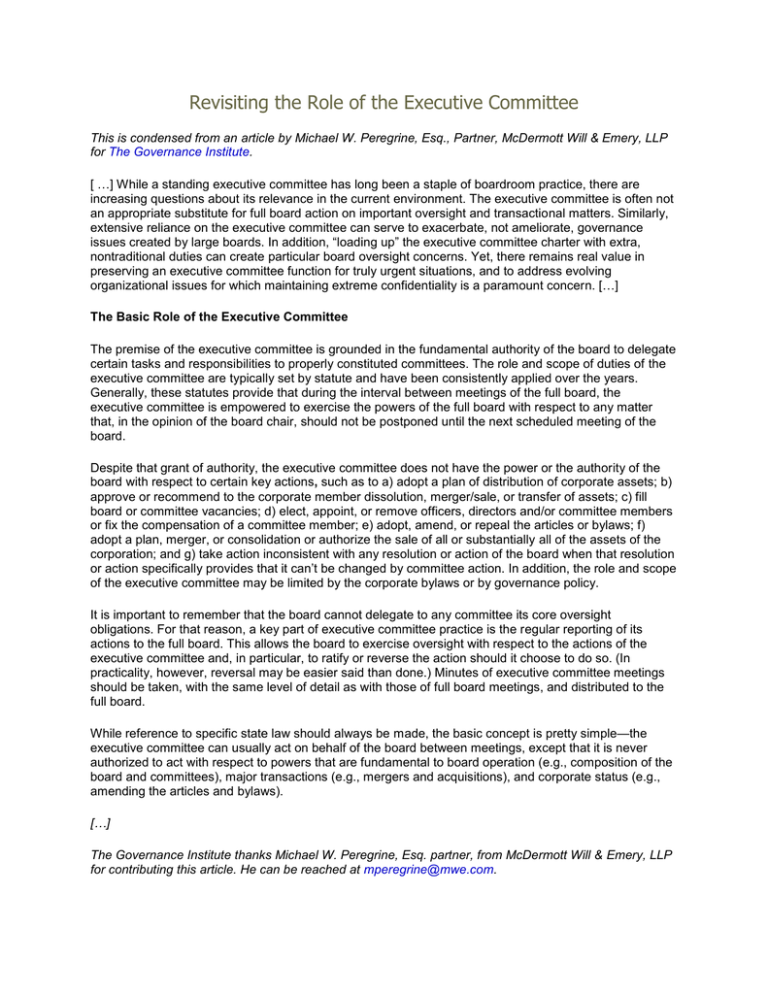
Revisiting the Role of the Executive Committee This is condensed from an article by Michael W. Peregrine, Esq., Partner, McDermott Will & Emery, LLP for The Governance Institute. [ …] While a standing executive committee has long been a staple of boardroom practice, there are increasing questions about its relevance in the current environment. The executive committee is often not an appropriate substitute for full board action on important oversight and transactional matters. Similarly, extensive reliance on the executive committee can serve to exacerbate, not ameliorate, governance issues created by large boards. In addition, “loading up” the executive committee charter with extra, nontraditional duties can create particular board oversight concerns. Yet, there remains real value in preserving an executive committee function for truly urgent situations, and to address evolving organizational issues for which maintaining extreme confidentiality is a paramount concern. […] The Basic Role of the Executive Committee The premise of the executive committee is grounded in the fundamental authority of the board to delegate certain tasks and responsibilities to properly constituted committees. The role and scope of duties of the executive committee are typically set by statute and have been consistently applied over the years. Generally, these statutes provide that during the interval between meetings of the full board, the executive committee is empowered to exercise the powers of the full board with respect to any matter that, in the opinion of the board chair, should not be postponed until the next scheduled meeting of the board. Despite that grant of authority, the executive committee does not have the power or the authority of the board with respect to certain key actions, such as to a) adopt a plan of distribution of corporate assets; b) approve or recommend to the corporate member dissolution, merger/sale, or transfer of assets; c) fill board or committee vacancies; d) elect, appoint, or remove officers, directors and/or committee members or fix the compensation of a committee member; e) adopt, amend, or repeal the articles or bylaws; f) adopt a plan, merger, or consolidation or authorize the sale of all or substantially all of the assets of the corporation; and g) take action inconsistent with any resolution or action of the board when that resolution or action specifically provides that it can’t be changed by committee action. In addition, the role and scope of the executive committee may be limited by the corporate bylaws or by governance policy. It is important to remember that the board cannot delegate to any committee its core oversight obligations. For that reason, a key part of executive committee practice is the regular reporting of its actions to the full board. This allows the board to exercise oversight with respect to the actions of the executive committee and, in particular, to ratify or reverse the action should it choose to do so. (In practicality, however, reversal may be easier said than done.) Minutes of executive committee meetings should be taken, with the same level of detail as with those of full board meetings, and distributed to the full board. While reference to specific state law should always be made, the basic concept is pretty simple—the executive committee can usually act on behalf of the board between meetings, except that it is never authorized to act with respect to powers that are fundamental to board operation (e.g., composition of the board and committees), major transactions (e.g., mergers and acquisitions), and corporate status (e.g., amending the articles and bylaws). […] The Governance Institute thanks Michael W. Peregrine, Esq. partner, from McDermott Will & Emery, LLP for contributing this article. He can be reached at mperegrine@mwe.com.
